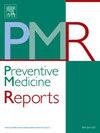瑞士日内瓦二十年高血压流行、认识、治疗和控制的人群趋势
IF 2.4
3区 医学
Q2 PUBLIC, ENVIRONMENTAL & OCCUPATIONAL HEALTH
引用次数: 0
摘要
高血压是心血管疾病的主要原因,影响着全球约13亿成年人。尽管采取了干预措施,但意识和控制仍然不够理想,并可能因COVID-19大流行而恶化。这项以人群为基础的研究调查了瑞士日内瓦(2005-2023年)20年来高血压患病率、意识、治疗和控制的趋势。方法:这是一项在瑞士日内瓦进行的基于人口的年度趋势研究(Bus Sante)。这项研究收集的数据是在2005年到2023年之间。高血压趋势和患病率按性别、年龄、教育程度和收入分层。根据社会人口和健康因素调整的多变量回归模型确定了结果的决定因素。结果总共有11,278人参与。高血压患病率从38.9%下降到35.2%,其中初等教育人群(- 6.1%)和低收入人群(- 6.1%)下降幅度更大。意识随着时间的推移保持稳定。未控制的高血压下降(44.9%至42.2%,p = 0.01),社会经济地位较低的群体和糖尿病患者的情况有所改善。老年女性更有可能患有未经治疗(+ 16.1%)和未控制的高血压,而年轻男性表现出更高的不知知率(57.7%)。在过去的12个月里去看医生与意识的提高无关。结论高血压患病率和控制总体上有所改善,社会经济差距缩小。然而,一些人群仍然存在风险,初级保健对于更好地筛查、认识、治疗和控制高血压至关重要。本文章由计算机程序翻译,如有差异,请以英文原文为准。
Twenty years population-based trends in prevalence, awareness, treatment, and control of hypertension in Geneva, Switzerland
Objective
Hypertension is a leading cause of cardiovascular disease and affects about 1.3 billion adults worldwide. Despite interventions, awareness and control remain suboptimal and might have worsened due to the COVID-19 pandemic. This population-based study examines 20-year trends in hypertension prevalence, awareness, treatment, and control in Geneva, Switzerland (2005–2023).
Methods
This is a year-trends population-based study (Bus Sante) ongoing in Geneva, Switzerland. Data collected in this study were between 2005 and 2023. Hypertension trends and prevalence were stratified by sex, age, education, and income. Multivariable regression models adjusted for sociodemographic and health factors identified determinants of outcomes.
Results
Overall, 11,278 individuals participated. Hypertension prevalence decreased from 38.9 % to 35.2 %, with greater reductions in individuals with primary education (−6.1 %) and low income (−6.1 %). Awareness remained stable with time. Uncontrolled hypertension decreased (44.9 % to 42.2 %, p = 0.01), with improvements in lower socioeconomic groups, and individuals with diabetes. Older women were more likely to have untreated (+16.1 %) and uncontrolled hypertension, while younger men exhibited higher unawareness rates (57.7 %). Having a doctor visit in the past 12 months was not associated with increased awareness.
Conclusions
Hypertension prevalence and control improved overall, with reduced socioeconomic disparities. However, some groups remain at risk and primary care is essential for better screening, awareness, treatment, and control of hypertension.
求助全文
通过发布文献求助,成功后即可免费获取论文全文。
去求助
来源期刊

Preventive Medicine Reports
Medicine-Public Health, Environmental and Occupational Health
CiteScore
3.90
自引率
0.00%
发文量
353
 求助内容:
求助内容: 应助结果提醒方式:
应助结果提醒方式:


